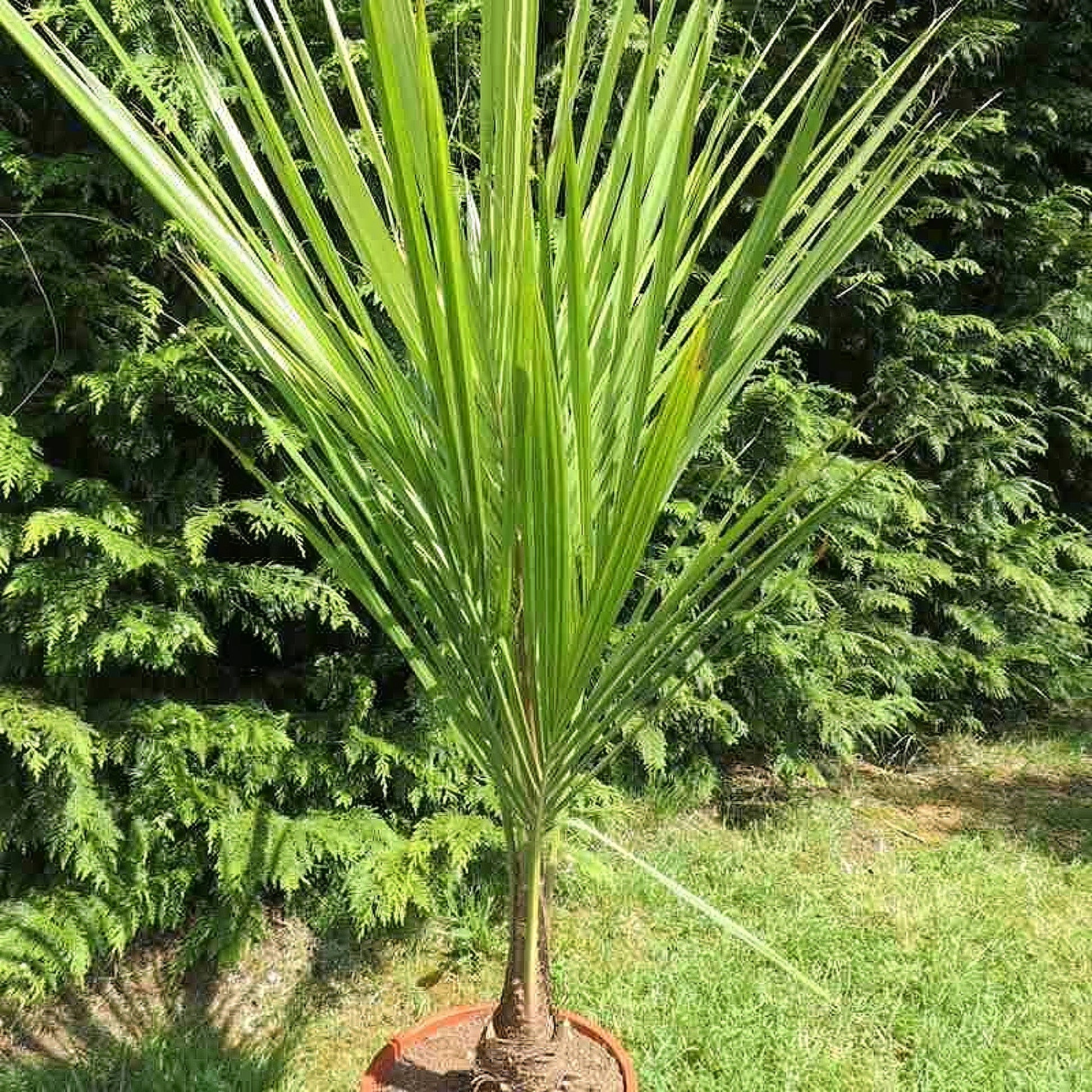VIRIAR
Beccariophoenix alfredii - High Plateau Coconut Palm - 5 x seeds
Beccariophoenix alfredii - High Plateau Coconut Palm - 5 x seeds
Couldn't load pickup availability
Plant Description
Name: Beccariophoenix alfredii
Common Name: High Plateau Coconut Palm, Madagascar High Plateau Palm
Beccariophoenix alfredii, commonly known as the High Plateau Coconut Palm or Madagascar High Plateau Palm, is a striking and rare palm species native to the high plateau regions of Madagascar. This palm is known for its robust, solitary trunk and large, arching fronds that resemble those of a coconut palm, which is why it is often referred to as a "coconut-like" palm. The trunk is smooth and ringed with leaf scars, and the crown is composed of long, pinnate (feather-like) leaves that are a rich, deep green.
Beccariophoenix alfredii is a medium to large palm that can reach heights of up to 12-15 meters. It is prized for its ornamental value and is a popular choice for tropical and subtropical gardens, especially in areas where a true coconut palm (Cocos nucifera) might not thrive due to cooler temperatures. This palm is relatively cold-tolerant, making it suitable for cultivation in a wider range of climates than most tropical palms.
Cultivation of Beccariophoenix alfredii
Conditions:
- Light: Beccariophoenix alfredii thrives in full sun but can also tolerate partial shade, especially when young. Providing adequate sunlight is important for the palm’s optimal growth and health.
- Temperature: This palm prefers warm climates, with ideal temperatures ranging from 20-30 °C. It is more cold-tolerant than many other tropical palms and can withstand temperatures as low as -3 °C for short periods, although it should be protected from prolonged exposure to frost.
- Soil: Beccariophoenix alfredii prefers well-draining soil with a mix of sand and organic matter. It can adapt to various soil types, including sandy and loamy soils, and thrives best in slightly acidic to neutral pH levels.
- Water: Regular watering is essential, especially during the palm's establishment phase. The soil should be kept moist but not waterlogged. Once established, this palm can tolerate short dry spells but performs best with consistent moisture.
Planting and Care:
- Planting: Plant Beccariophoenix alfredii in a location with full sun exposure and well-draining soil. Ensure there is sufficient space for its eventual size, both in height and width. If growing in cooler climates, consider planting in a sheltered location to protect from strong winds and frost.
- Fertilization: Fertilize the palm with a balanced, slow-release fertilizer formulated for palms, typically applied in the spring and summer. This will promote healthy growth and vibrant foliage.
- Maintenance: This palm requires minimal maintenance. Prune any dead or damaged fronds to maintain a tidy appearance. Beccariophoenix alfredii is relatively resistant to pests and diseases, making it a low-maintenance addition to gardens.
Growing from Seeds
- Seed Preparation: Fresh seeds have the best chance of successful germination. Soak the seeds in warm water for 24-48 hours before sowing to help soften the seed coat and encourage germination.
- Sowing: Sow the seeds in a well-draining seed-starting mix, such as a combination of sand, perlite, and peat. Plant the seeds about 2-3 cm deep, ensuring they are covered lightly with soil.
- Germination Conditions: Place the seed tray in a warm, humid environment with temperatures around 25-30 °C. Keep the soil consistently moist but avoid waterlogging. Germination can take several weeks to months, so patience is required.
- Care for Seedlings: Once the seedlings emerge, provide them with bright, indirect light and continue regular watering. As they grow, transplant them into larger pots or directly into the ground in a suitable location.
Growing Beccariophoenix alfredii from seed can result in a beautiful, coconut-like palm that adds a touch of tropical elegance to any landscape, particularly in regions where more tropical palms may struggle.






